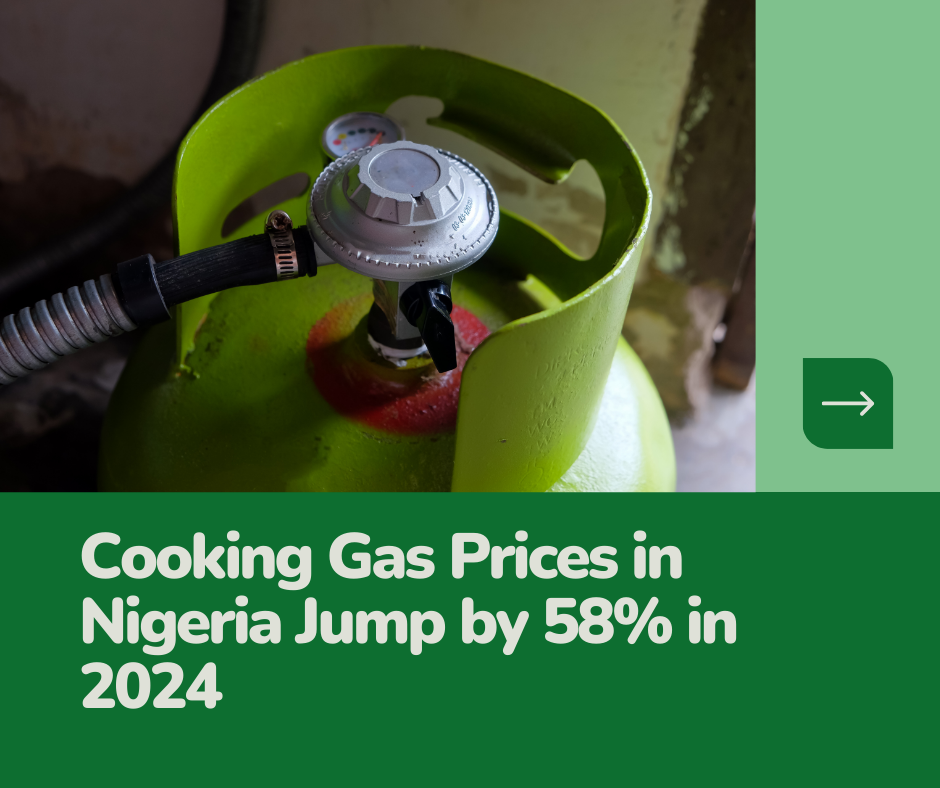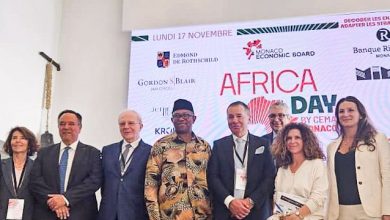
Cooking Gas Prices in Nigeria Jump by 58% in 2024: See How It Impacts You
In 2024, cooking gas prices have surged across Nigeria, affecting households nationwide. According to recent data from the National Bureau of Statistics (NBS), the cost of refilling Liquefied Petroleum Gas (LPG), commonly known as cooking gas, has increased significantly, making it harder for the average Nigerian to afford this essential commodity. This article provides an in-depth look at the current state of LPG pricing, explores the factors driving these price hikes, and compares the impacts across different states.
A Significant Increase in Cooking Gas Prices
The average price for refilling a 5kg cooking gas cylinder increased by 3.23% month-on-month, from N6,699.63 in September 2024 to N6,915.69 in October 2024. On a year-on-year basis, the price jumped by 51.58%, from N4,562.51 in October 2023. Similarly, the 12.5kg cylinder price rose by 2.58% month-on-month, from N16,313.43 in September 2024 to N16,734.55 in October 2024, and by 58.68% year-on-year from N10,545.87 in October 2023. These hikes have left many Nigerian households struggling, with energy costs now taking a bigger bite out of their already tight budgets.
Breaking Down the Regional Differences
Data from the NBS shows notable regional differences in cooking gas prices:
- Borno State recorded the highest average price for refilling a 5kg cylinder at N7,939.29, followed by Yobe State at N7,580.00, and Benue State at N7,578.00.
- Katsina State had the lowest average price for a 5kg cylinder at N6,270.00, followed by Zamfara at N6,410.71, and Delta at N6,427.78.
For the 12.5kg cylinder:
- Rivers State recorded the highest average price at N17,895.00, followed by Osun at N17,739.06, and Benue at N17,731.25.
- Katsina State again had the lowest price at N14,725.00, followed by Nasarawa at N15,390.55, and Adamawa at N15,474.21.
What’s Driving Up LPG Prices?
Several factors contribute to the rising cost of cooking gas in Nigeria:
- Global Energy Prices: Fluctuations in global crude oil prices directly impact the cost of LPG, as it is a by-product of oil refining.
- Currency Devaluation: The devaluation of the Naira has made imports more expensive, including the importation of LPG, which accounts for a significant portion of the gas used in Nigeria.
- High Demand and Supply Issues: With an increasing population and growing urbanization, the demand for cooking gas has surged, sometimes outpacing supply.
- Transportation Costs: The cost of transporting LPG from ports or refineries to various parts of the country is another factor adding to the retail price.
State-Level Analysis: Where Is Cooking Gas Most Expensive?
- Borno State leads in terms of the cost for a 5kg cylinder, with an average price of N7,939.29. This significant price increase can be linked to logistical challenges in the North-East, including security concerns that affect supply chains.
- Yobe State follows closely, with an average price of N7,580.00.
- On the other end of the spectrum, Katsina State offers the lowest price at N6,270.00, likely benefiting from a more stable supply and lower transportation costs.
For the larger 12.5kg cylinder, Rivers State had the steepest price at N17,895.00, followed by Osun and Benue at N17,739.06 and N17,731.25, respectively. The higher prices in the South-South and South-East zones can be attributed to higher living costs and greater demand.
Price Trends Over the Last 12 Months
Over the last year, LPG prices have consistently increased, and the trend shows no sign of stopping. For example:
- In the North-East, the average price for a 5kg cylinder rose by 58.29%, reaching N7,319.03 in October 2024, compared to N4,623.81 in October 2023.
- The South-East saw an average increase of 69.96% for the same cylinder size, highlighting significant inflationary pressure on energy costs in the region.
This steady increase in LPG prices can partly be attributed to a lack of significant infrastructure development to boost local LPG production and reduce reliance on imports.
How Can Households Cope With Rising LPG Costs?
The sharp rise in cooking gas prices is undoubtedly taking a toll on household budgets. Here are a few ways households can mitigate these costs:
- Energy Efficiency: Households should focus on reducing energy consumption by adopting energy-efficient cooking methods, such as using pressure cookers or insulating pots to retain heat.
- Group Purchasing: Some communities have successfully reduced costs by forming cooperatives that purchase LPG in bulk, thereby securing better prices from suppliers.
- Explore Alternatives: In regions where cooking gas has become too expensive, some families are exploring alternatives like biomass stoves or other renewable energy options.
Government’s Role in Stabilizing LPG Prices
The Nigerian government can take several measures to help stabilize cooking gas prices:
- Encouraging Local Production: Increasing investment in local LPG production could help reduce dependency on imports and buffer the impact of global price fluctuations.
- Improving Infrastructure: Developing a more robust LPG distribution infrastructure, particularly in regions like the North-East, can help reduce transportation costs and improve supply consistency.
- Subsidies or Tax Relief: Offering subsidies or temporary tax reliefs on LPG could provide immediate relief to households struggling with the high costs.
Future Outlook: What Lies Ahead for LPG Prices?
While the current trend points to a continuous rise in LPG prices, there are opportunities for reversal if proactive steps are taken. Boosting local production, enhancing supply chain efficiency, and government intervention through policy support could help stabilize or even reduce the cost of cooking gas.
However, the reality for many Nigerians remains that cooking gas is now a significant monthly expense. If the situation does not improve, many households may revert to less efficient and more environmentally damaging energy sources, such as firewood and charcoal, which could have negative long-term effects on both health and the environment.
Conclusion
The rising cost of cooking gas in Nigeria reflects broader economic challenges, including global price trends, currency devaluation, and supply chain issues. With a 51.58% increase in the price of a 5kg cylinder and a 58.68% rise for a 12.5kg cylinder, many Nigerians are facing increased financial pressure to meet their energy needs. Regional disparities also reveal the complexities of the LPG market in Nigeria, with states like Borno and Rivers experiencing particularly steep prices.
To cope, households are encouraged to adopt energy-efficient practices and explore alternative energy sources where feasible. Meanwhile, government action remains critical in addressing these challenges, ensuring that LPG remains an affordable option for all Nigerians.




